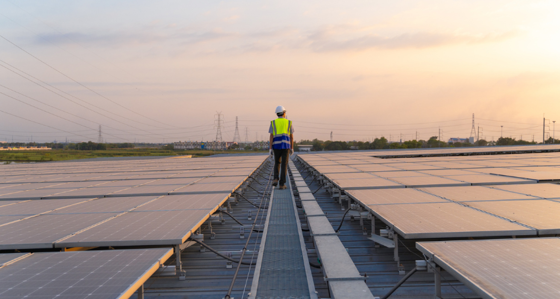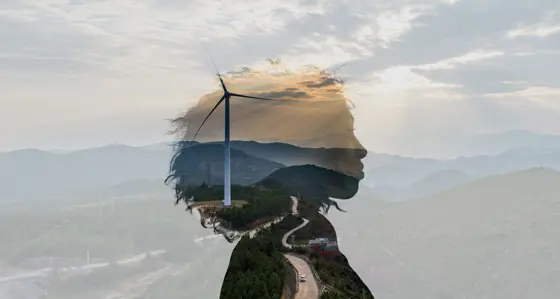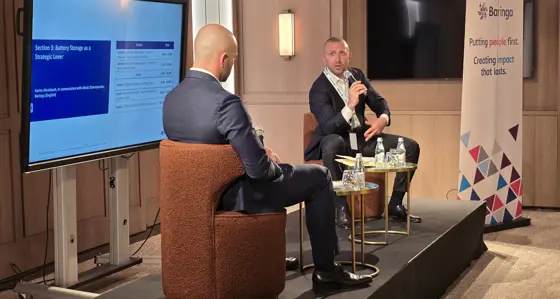
The journey to net zero: why this is more than just EMR 2.0
21 June 2021
To achieve net zero, the change required across the whole energy system is vast, and it will be complex. There is no easy answer; what is needed is a clear set of guiding principles to steer through a complicated and evolving policy landscape on the journey to fully decarbonise our economy by 2050.
There are signs that the scale of the net zero challenge is starting to focus minds, and in the energy sector, people are talking about a potential ‘EMR2.0’ (Electricity Market Reform v2). But what is needed will be far more transformative. EMR was predominantly about creating the policy environment to steer towards a lower carbon electricity system, and prove new renewable technologies. In many ways it has been a success, with dramatic reductions in renewables costs, and a big drop in carbon emissions from the electricity sector over the past decade. EMR set the direction, but never targeted a specific outcome.
With Net Zero, we know exactly where we need to be by 2050 (net zero carbon across the whole economy), although we don’t know exactly what it will look like, and certainly not how we are going to get there. It will require a complete transformation of how we consume, store, transmit and distribute energy across the whole energy system.
The scale of the challenge is a different order of magnitude to what we were looking at back in 2010.
And then there is the people-factor. Few end customers were probably aware of EMR; everybody will need to know about Net Zero because it will directly affect their lives and livelihoods.
Much of the debate on market design appears to be looking at alternative approaches seen in other markets, like nodal pricing or supplier obligations. Of course, we can learn from other markets, but the scale of the Net Zero challenge is unprecedented and there is no blueprint to follow.
Proposals being put forward thus far seem mainly focused on changes to wholesale market design and how renewables are funded, but there is little evidence that they will be effective in tackling the challenges we face, certainly not in isolation.
We believe achieving Net Zero will require a holistic approach from mobilising community engagement in local energy systems to coordination of huge offshore generation and transmission projects; from consumers taking individual actions to insulate their homes to major changes to the gas networks; and, from the emergence of new innovative businesses to significant changes to the roles and responsibilities for institutions tasked with planning and operating our energy system.
The sheer complexity of the challenge, and the uncertainty we face, makes it very difficult to prophesise a market design that can be guaranteed to work. We need to accept that policy will have to evolve, be implemented sequentially and not in one big bang, trade-offs will need to be made, and we absolutely certainly won’t get everything right first time.
In other words, we must accept we can’t know everything. A lot will change over the next thirty years and we just can’t have all the answers at the outset. There is a fine balance to be struck between acting now versus keeping options open.
That doesn’t sound like a recipe for investor confidence at a time when vast sums of capital are needed. Amid this complexity, we require a clear set of guiding principles that will align individual policy decisions to the wider vision and strategy for net zero, to encourage long-term investment, even when exact policy details are not yet known.
We propose the following five principles:
1. Deploying “whole system” thinking
Our energy system is highly interconnected. Whole systems thinking will be critical for understanding interdependencies between policies.
A whole systems approach is needed for network planning since the most cost-effective solution for a particular network need (and potentially less disruptive to customers or the local environment) may involve deploying flexibility, a solution provided by another network operator or even a cross-energy vector solution.
With the emergence of the Distribution System Operators (DSO) at the distribution level, coordination between system operators in operational timeframes will be critical to ensure that flexible resources are deployed where they add most value in the decarbonising electricity system.
Given the levels of uncertainty, options are valuable, and hence the value that optionality brings will need to feature more prominently in future policy and investment decision making than it has historically.
2. Clear roles and responsibilities
Decision making is quite disparate currently, and there are potential bottlenecks, when time is of the essence. There should be an emphasis on streamlining the governance process, whilst maintaining independence and transparency.
Concentrating more decision-making authority into a single body, for example a future independent system operator, should be considered.
Amid this upheaval, we must be clear on who is responsible for keeping the lights on, and indeed what that means in a world where back up supplies are sitting on our streets and driveways in the form of batteries in electric vehicles. We need a radical rethink of the concept of security of supply in a world of distributed energy storage, embracing data, advanced analytics, and innovation while recognising new risks, such as cyber, and our increasing reliance on electricity.
3. Consistent carbon signal
While we wait for a global carbon price to be adopted, policies should align as best as possible to signal a consistent carbon value, minimising distortions between sectors, fuel use, and generation versus network solutions.
With more and more zero marginal cost plant on the system there is fear in some quarters that the wholesale market may not function as we approach Net Zero. But with a much more flexible demand side, and customers always willing to pay for a valuable product like electricity, there is absolutely no reason why the Net Zero electricity market cannot be liquid and dynamic, with reliable price signals. What is important is to ensure that mechanisms designed to underwrite investment, such as Contracts for Difference, do not distort the way in which low carbon energy producers bid into the market. That is perhaps the biggest threat to a full functioning wholesale market.
4. Knowing where competition can be most effective
Competition has proven very effective in promoting consumer choice, driving cost efficiencies and optimising the dispatch of energy markets. And we expect competition to play a critical role in delivering net zero at least cost, for example, through tendering for new infrastructure projects, the creation of new decentralised markets in energy, network access and flexibility, and through further ‘pathfinder’ innovation competitions.
However, competition is not appropriate in all circumstances. For example, if you know the outcome we are trying to achieve (e.g. 40 GW of offshore wind by 2030), then there is little benefit to be derived from relying on the market to determine the generation mix and location, and a lack of certainty for investors may simply drive up the cost of capital and lead to unnecessarily aborted projects. To our second principle, greater central coordination is inevitable if Net Zero is to be achieved.
5. Engaging and protecting the consumer
With a greater role for central coordination the cost of any ‘mistakes’ will inevitably fall more on consumers than investors. Furthermore, to maintain investor confidence through an evolving policy landscape, Government must provide guarantees that existing investments are kept whole.
The quid per quo of consumers bearing more risk is that they should benefit from the lower cost of capital for investors, revealed through robust competition and effective regulation, feeding through to lower energy prices.
Advances in technology present end customers with fantastic opportunities to engage in the energy transition, and use, produce and store energy in ways that further reduce their bills and carbon impacts. However, protections might be needed for some consumer groups to make sure their bills are not rising as a consequence of more engaged customers paying less.
In certain circumstances consumer choice might be restricted in order to achieve net zero, for example a mandated low carbon district heating solution. In these situations, it is important that effective regulation protects those customers as if they did have the ability to switch solutions or providers like other customers.
Government is facing the unenviable dilemma of having to move fast given the urgency of the emergency, while making policy in a sea of uncertainty and conflicting opinion of what it should do.
But this is not a sequel to EMR, since it goes much further and the stakes are considerably higher.
We don’t have all the answers right now, but if we can affirm a set of guiding principles, such as those that we have outlined in this viewpoint, the pathway towards net zero may just become a little clearer, and participants can be confident in a coherent, if evolving, policy framework that they can invest in.
Related Insights

What might a reformed GB national power market look like under REMA?
Discover how a reformed national market is likely to include significant changes to current market arrangements, with material impacts for market participants.
Read more
Investing in uncertainty: European power market outlook 2025
Our latest outlook points to a more uncertain energy transition, shaped by political and economic volatility across Europe in the form of Trade Wars, Populism and Remilitarisation.
Read more
REMA and investing in GB power market under uncertainty
Learn about the opportunities and challenges of investing in the GB power market under uncertainty and how Baringa can help
Read more
Three ways in which increased volatility and flexibility are reshaping Spain’s energy market
Spain's energy market faces profound change due to curtailment, negative prices, and a recent blackout, discussed at our roundtable event.
Read moreIs digital and AI delivering what your business needs?
Digital and AI can solve your toughest challenges and elevate your business performance. But success isn’t always straightforward. Where can you unlock opportunity? And what does it take to set the foundation for lasting success?